In an earlier blog, I had discussed the objective and methodology of the BYPASS Lab, a one-week workshop organised by the Indo-German Centre for Sustainability (IGCS), IIT Madras and hosted by the Rajiv Gandhi National Institute of Youth Development at Sriperumbudur. The workshop focused on training the early professionals and students on data gathering, data visualisation and design research. In this blog, I will take you the story of kadai kadhai - a story of shops in the peri-urban industrial area on deriving the possibilities that can be the factor for locating the shops and successful running of it.
Through a set of group exercises, we surveyed the peri-urban industrial setup and shops around them, to gather data and visualise them in all possible forms. My group decided to work on documenting the activities in the Irungattukottai SIPCOT and Thirumazhisai SIDCO (Image 1). Before going to the field survey we downloaded the map of those mentioned areas from the Field Papers online platform, marked the eateries and tea shops in the atlas and also used Google maps. We took photos of the area and interacted with few sellers. From that we came to know that the sellers in Irungattukottai SIPCOT are from nearby villages which are getting rapidly incorporated in the urbanization and industrialization of the area, and are trying to make livelihood from these developments (Image 2). In the timeline lighter shades of violet are the new industries thicker shades are the older ones and yellow shades are residential area.
Image 1. Area of study with hotspots
Image 2: Timeline of Development in Irungattukottai SIPCOT and Thirumazhisai SIDCO
Next morning, we went to field with the objective of learning about the activities that take place at that early time. To our surprise we found out that there is not much disturbance in the activities comparing to the normal day. We took photos of the individual shops and interacted with each shop located on the main road of the Irungattukottai SIPCOT and one stretch in Thirumazhisai SIDCO.
From our interactions we gathered that most of the vendors in Irungattukottai SIPCOT remain in the area for nearly 12 hours from 7am to 7pm they bring the breakfast food by mini-auto and few others prepare at their spot of vending. They have placed their shops at the junction inside Irungattukottai SIPCOT under nice shades of trees and a location where they can serve large numbers of peoples. Whether intention or not, these factors ensure that the shops are strategically located, thus improving their business opportunities.
The zone of influence of the shops in Irungattukottai SIPCOT varies, as peoples working in the industries came from motorcycles and few came in cars (Image 3). So it states that the zone of influence does not necessarily be the nearest points it can serve. However most of the workers came by walk, to the nearby shops and the shop which they purchase varies depending on their needs. The stretch we took for our observation have made a point that maximum activities happens under the trees. This indicates the green spaces acts as an indirect factor in influencing the activities in the industrial area. The green spaces adds aesthetic value to the surroundings and serves as a canopy to the shop keepers.
There is the difference between the shops established in both the areas when comparing them. The shops in Irungattukottai SIPCOT are a mix of mobile one like hand push cart, omni vans and mini autos and others are stationary, they caters the peoples with different items ranging from breakfast, lunch, tea and snacks and few caters dinner. Since the industrial area is far from residential area of the workers in it the industries satisfies the needs, in case of their needs are not satisfied inside the industry. In Thirumazhisai SIDCO which is nearer to the residential area the shops are stationary they caters really a small amount of people for breakfast at morning, tea and snacks in the rest of the day.
Image 3: Zone of influence and green cover in the surveyed route
The cross-sectional view of the Irungattukottai SIPCOT shows the happenings of the area (Image 4). They have the mobile hand push carts and mini autos and stationary shop. We can see how the green spaces nurture the activities of the industrial area. The road spaces are used by the logistics vehicles, and the drivers are one of the main customers to the shops there. These activities in the streets of this industrial area make the area alive, which would otherwise be deserted.
Image 4. Cross sectional view of Irungattukottai SIPCOT
In contrast, though the industrial area of Thirumazhisai SIDCO is nearer to the residential area, we do not find many activities on the streets in this area (Image 5). The total number of customers was also low comparing shops in the Irungattukottai SIPCOT area.
Image 5: Cross-sectional view of Thirumazhisai SIDCO
The photos of the shops were spliced to study in detail. We organised them into canopy, process or practice, ground and context (Image 6). The canopy is the roof they have preferred for their shops. Vendors have trees, tarpaulin, and roof part of the push cart as a canopy. Process or practice is activities happening inside the shop or articles or items kept for sale. Ground section shows immediate contact of the shops to the ground, it is to study how, where they have parked their shops. The context is to display the area of location of the shops. Shop inside Irrungattukottai is established under a tree, which provides shade from scorching sun as well as helpful in escaping from rains (Image 7). This ensures that their business is not affected by weather conditions. The shop at SIDCO is way similar to the previous one but it seems they do not have much competition (Image 8).
Image 6: Shops (kadai) at the entrance of Irungattukottai SIPCOT
Image 7: Shop inside Irungattukottai SIPCOT
Image 8: Shop inside Thirumazhisai SIDCO
It would be a major omission not to take time as a factor into account. It plays an important, even crucial role in the analysis of the dynamics of these spaces. Vendors planned their schedule along the expected time when their customers to arrive. THey are keenly aware of where their potential customers are located and where the major flows of customer traffic were. For example, tea sellers at Irungattukottai SIPCOT had to be aware of where the factories where and when the various shifts are going to end, so that they could be prepared for their customers. The effect of time is magnified by their location. Space and time in this context were not independent, but interrelated.
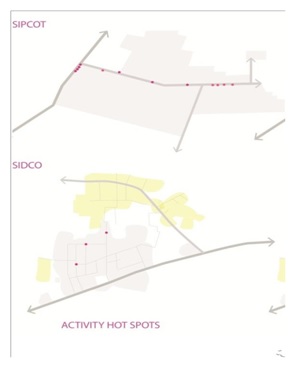
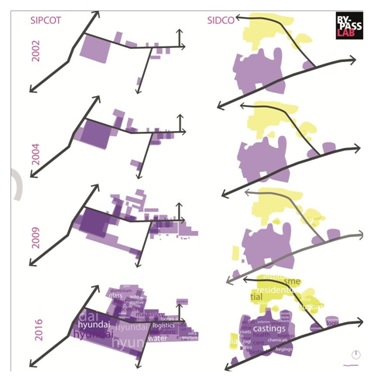
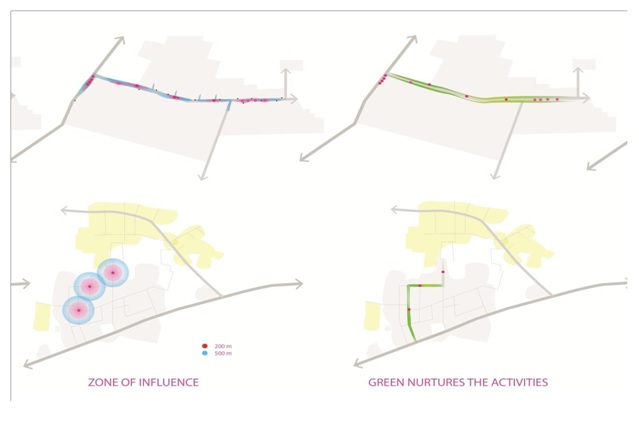
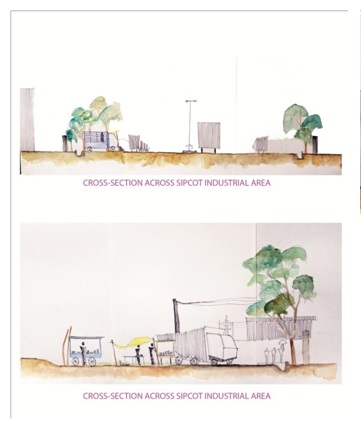
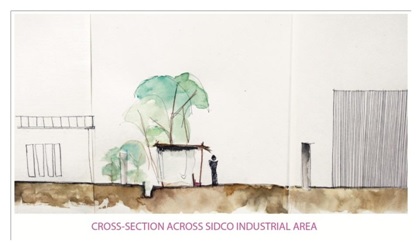
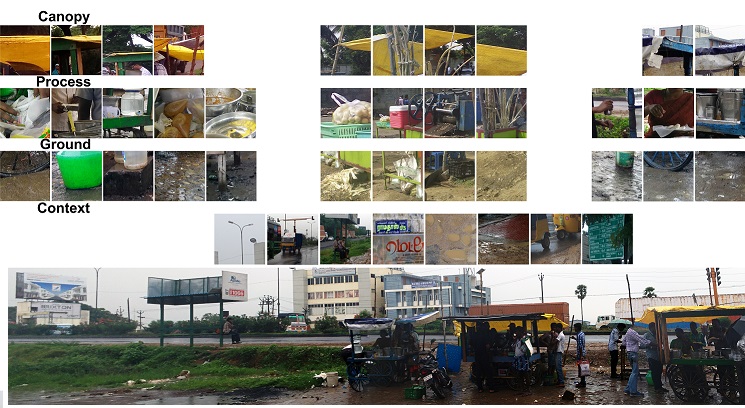
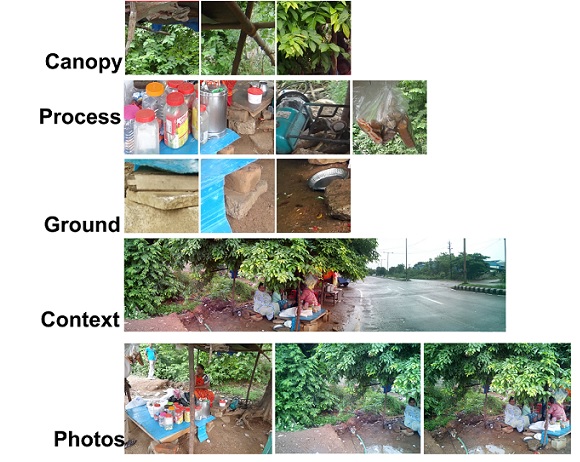
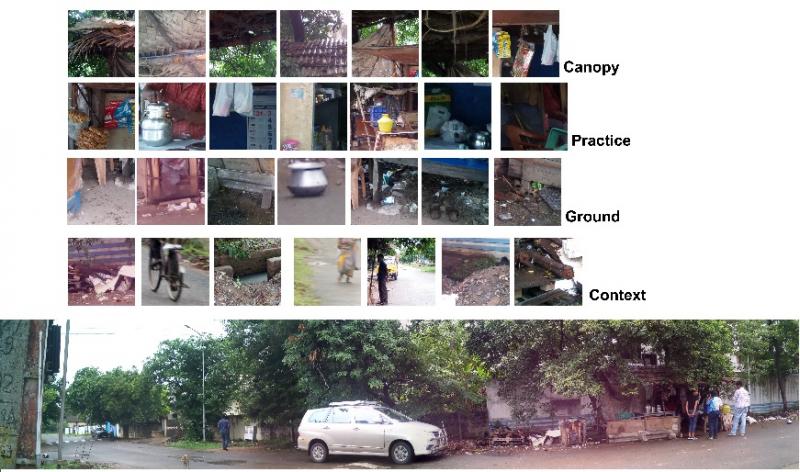
Add new comment